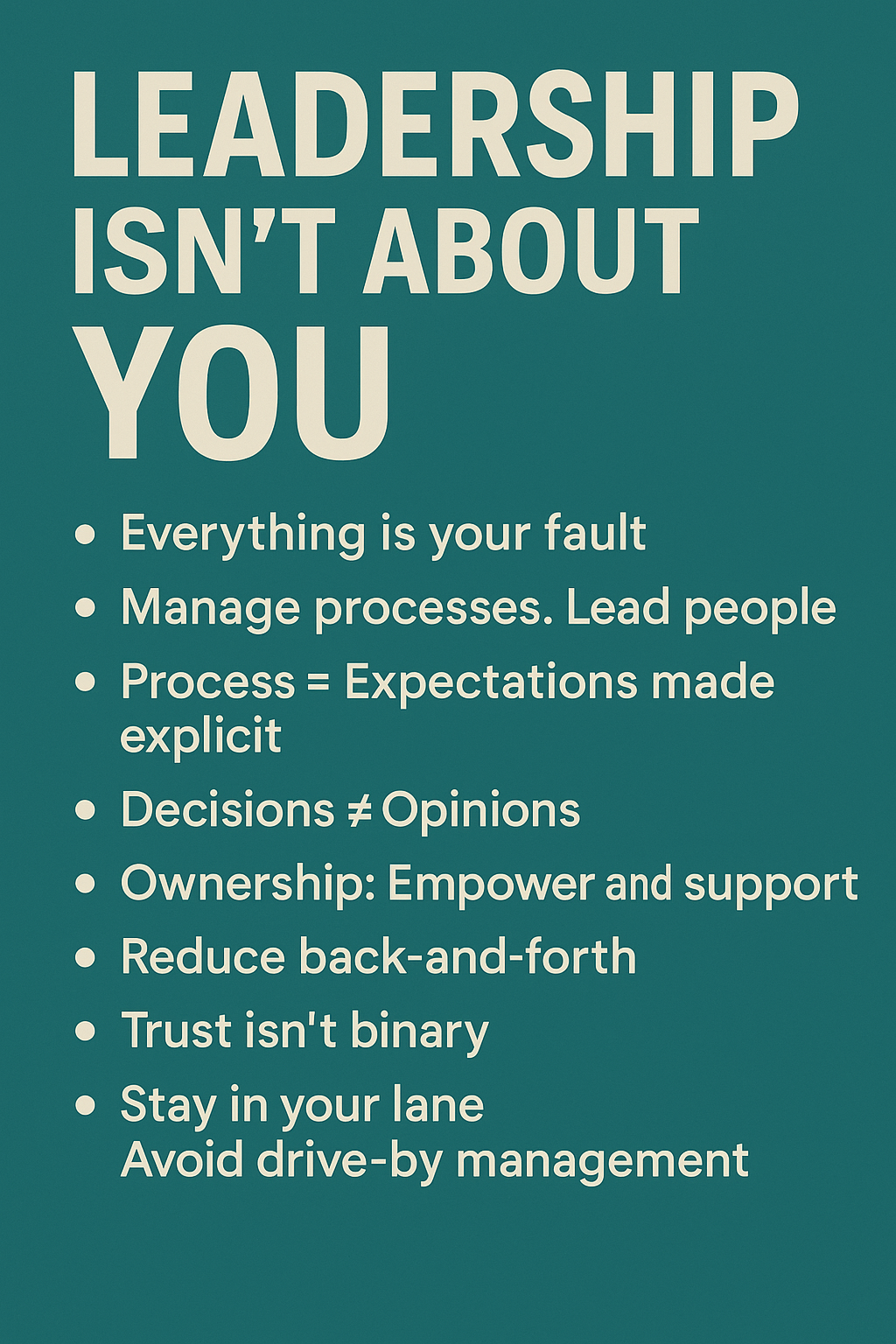There’s a quiet truth in engineering leadership: he who controls the narrative, controls the outcome.
It’s not about ego or hierarchy. It’s about influence — the kind that shapes how problems are defined before anyone even starts solving them. Because in most organizations, the story gets written long before the first line of YAML, Terraform, or code review ever happens. And whoever frames that story determines what “success” even means.
The Problem with the “Support Mindset”
Too often, Infrastructure gets cast as the backend janitorial crew — the team that cleans up after someone else’s strategy. Product defines the roadmap, applications define the architecture, and Infra’s told to “make it scale.” By the time we’re looped in, the decisions have already been made, and our job is to retrofit sanity onto chaos.
That’s not partnership. That’s damage control.
When Infrastructure sits downstream of strategy, we lose the opportunity to influence trade-offs early — to ensure scalability, reliability, and security aren’t treated as afterthoughts. Worse, it trains Infra leads (especially newer or less confident ones) into a reactive “tell me what to do” posture. It’s safe, but it’s small. And small doesn’t scale — not for systems, not for leaders.
The truth is: Infrastructure is strategy. The systems we build define the organization’s capacity to move, adapt, and survive change. But to have that influence recognized, we have to stop waiting for permission to lead the narrative.
Reframing the Role
Being “strategic” doesn’t mean talking more in meetings or writing longer decks. It means doing the narrative work — helping others understand why the technical foundations matter, how they connect to business goals, and what the cost of misalignment looks like in human and operational terms.
For neurotypical leaders, this often looks like proactive communication and visible ownership. For neurodivergent leaders, it can also mean leveraging our pattern recognition, systems thinking, and hyperfocus to spot blind spots others miss — then translating that insight into language decision-makers can use.
Both paths rely on the same principle: become the person who defines the story others tell about Infrastructure.
How to Do That — Practically
Here are a few concrete ways to start shaping the narrative instead of reacting to it:
- Write the first draft.
Before a roadmap review or strategic planning session, sketch out what success should look like from an Infrastructure perspective. Frame it in business terms — velocity, stability, risk reduction, developer happiness — not just uptime or cost. People tend to adopt the first coherent story they hear. Be the one who writes it. - Speak in systems, not silos.
Connect Infrastructure decisions to organizational outcomes. Instead of saying, “We need to migrate to Kubernetes,” say, “We need a deployment model that lets us ship faster and scale predictably as traffic grows 4x.” You’re not just describing work — you’re telling a story about why that work matters. - Model curiosity, not certainty.
Influence grows when you’re seen as the person asking the right questions, not the person insisting on the right answers. “What problem are we actually solving?” “How do we know this scales past Q2?” These questions reframe conversations in your favor without sounding combative. - Visualize the invisible.
Infra work is often invisible until it breaks. Use diagrams, dashboards, or brief “infra stories” to make risk, complexity, and payoff legible to others. Turn what’s abstract into something others can see — because people can’t prioritize what they don’t understand. - Narrate your leadership.
Whether you’re neurotypical or neurodivergent, don’t let others guess at your intent. Share your thought process openly — “Here’s how I’m thinking about resilience in our Q4 goals,” or “This pattern we’re seeing in our deployment failures probably points to X.” Transparency turns you from a task owner into a strategic voice. - Build narrative alliances.
Find peers in Product, Security, or Data who care about systems quality. Trade context. Help them tell your story inside their rooms — and tell theirs inside yours. Influence often spreads sideways before it moves up. - Anchor every technical initiative in human stakes.
Don’t just argue for observability — show how better observability keeps developers saner, incidents shorter, and customers happier. The best Infra leaders make the invisible feel personal.
The Meta-Level: Leading with Story
For neurodivergent leaders especially, narrative control isn’t just about communication — it’s about executive function. We need structure to thrive. We need clarity to act. And when we help define the story, we create the scaffolding that makes leadership sustainable for ourselves, too.
So yes — he who controls the narrative controls the outcome.
But it’s not about control for control’s sake.
It’s about agency — shaping a story that everyone, from developer to CTO, can believe in and build from.
If you want Infrastructure to matter, start by owning the story.
The systems will follow.




